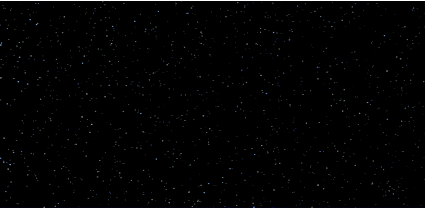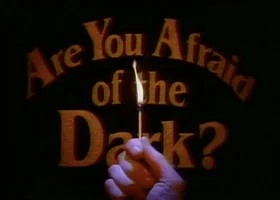Sci-Fi Fuel #4
The Voice in Your Head + Attack of the Jokes + Headlines & Patrick Stewart!
— This is a longer post than usual, so if you’re reading this via email, you might want to hop on over the the web version here to read the full thing! —
In This Newsletter:
Quantum Quote: A cool quote of the week + quick analysis!
Attack of the Jokes: Weird science/tech news + jokes!
Incoming Transmissions: TV/film/video/podcast recommendations
Newstopia: Weird science/tech news minus jokes!
Welcome to Sci-Fi Fuel #4! —
— an Alternate Timeline series highlighting news from the realms of science, tech, history, and pop culture that will help fuel your imagination.
Welcome back! Or, if you’re new here… welcome!
Not much to talk about in this here intro. But as I mentioned last week, my latest short story comes out at the end of the month. So, you can look forward to a sci-fi psychodrama called Ousted loosely inspired by Kevin McCarthy’s historic ousting as House Speaker.
In the meantime, I challenge you to reply or comment with a three sentence sci-fi story using “OUSTED” as the theme! I’ll share some of my favorites in the next newsletter (no one did it last week, but I’ll keep trying until it becomes a thing!) .
Now, let’s go ahead and rummage through some brain tingling headlines and quotes from last week!
Find past Alternate Timeline stories here.
QUANTUM QUOTE:
Since Halloween is around the corner, I’d like to highlight the scariest quote that reached my eyes this week. It’s from an October 18 article in The New York Times titled If You’ve Ever Heard a Voice That Wasn’t There, This Could Be Why (Link)—which already sounds like a spine-tingling page turner, or something an Are You Afraid of the Dark? character might say before tossing magic dust into the fire.
The first two paragraphs of the article hit the ground running with a description of a disturbing phenomenon. Those paragraphs have also won the award of being this week’s QUANTUM QUOTE! 👀 Read on if you dare!!
Some years ago, scientists in Switzerland found a way to make people hallucinate. They didn’t use LSD or sensory deprivation chambers. Instead, they sat people in a chair and asked them to push a button that, a fraction of a second later, caused a rod to gently press their back. After a few rounds, the volunteers got the creeping sense of someone behind them. Faced with a disconnect between their actions and their sensations, their minds conjured another explanation: a separate presence in the room.
In a new study published in the journal Psychological Medicine, researchers from the same lab used the ghostly finger setup to probe another kind of hallucination: hearing voices. They found that volunteers were more likely to report hearing a voice when there was a lag between the push of the button and the rod’s touch than when there was no delay.
Were you alone as you read that? If you’re answer was “yes”… are you sure?
Quick Sci-Fi Analysis:
First, let’s look at the construction of the quote.
The first paragraph, brilliantly crafted by Veronique Greenwood, lists a bunch of facts while also checking every box required to keep a reader invested.
Scientists in Switzerland ✅
An experiment about hallucinations ✅
An experiment about hallucination that could easily involve LSD or sensory deprivation ✅
But no, it just involves a button?! ✅
And the button makes a robotic rod touch your back?! ✅
And the disconnect between the button and the rod makes people feel a… presence???!!?! ✅
Then the second paragraph swoops in with the ultimate “But wait, there’s more!” by explaining how a few tweaks to the experiment makes people hear a voice.
Reading it made me think of all ways this technique could be abused. For instance: If (by means of this experiment) someone came to believe there is another presence in the room—all an evil-doer needs to evil-do is assertively suggest what that presence is in order get their desired outcome. A ghost to get someone out of a lease… An angel to get someone to sign your contract… The list goes on.
But there could also be positive outcomes. Let’s say someone comes to believe that the presence they sense after pressing the button is a projection of some portion of their own consciousness. Perhaps communing with that projection can heal a trauma.
The aspects of life where science and spirituality get so close they could practically kiss also function as one of the juiciest dilemmas for characters in science fiction and horror stories.
In The X Files, Mulder wants to believe in space aliens, while Skully wants the certainty of tangible facts.
In Evil, there is a similar dilemma for the core team (comprised of a priest and two logic-driven skeptics) as they solve “supernatural” problems.
The beauty of those scenarios is that the primary problem that needs solving (often involving someone’s life) overpowers the debate. The scientist and the spiritualist need to work together in order to crack the case. Sometimes science is the victor, but the spiritualist still choose to believe in, or invent, a supernatural explanation. Other times, spirituality or pseudoscience is the key to resolution—but the logical character maintains that a practical reasoning is still yet to emerge.
By the end of such stories, where science is pitted against the supernatural like two opposing warships, a new question slowly rises up from the water: “What is the difference?”
— This is a large post, so if you’re reading this via email, you might want to hop on over the the web version here to read the full thing! —
ATTACK OF THE JOKES:
A few weird science/tech news items made it into my daily joke series over at Letters from African America last week:
The American Museum of Natural History is planning to overhaul its stewardship of some 12,000 human remains. And its about time. It just doesn’t make sense in the modern age. Honestly, it’s amazing how we’ve gone from “this meeting could have be an email” to “these human remains could’ve been 3D printed.”
AI chatbots can guess your personal information from what you type. This is embarrassing — based on all of the jokes I’ve written so far, the chatbots have calculated that I’m “An Out Of Work Comedy Writer Who Needs A Haircut.” Brutal.
A college student used AI to read ancient Roman scrolls that had been illegible for 2,000 years. The parents are immensely proud of him, but a little concerned about his glowing red eyes and new ability to levitate.
A diet drug that is yet to be federally approved is already being sold online. More concerning… The drug looks exactly like cocaine:
More concerning than that… the drug is called ‘retatrutide’ — which starts off sounding like a word you shouldn’t say and ends sounding like you’re mad at me. So, yeah, it’s pretty much cocaine.
Okay—they weren’t all bangers. But mash that comment button if you’d like to tell me which was your favorite.
INCOMING TRANSMISSIONS:
WATCH: Stephen King at the University of Georgia - Part I (November 5, 1980)
Start for the oddly groovy 1980s intro and stay for the great stories and advice from Stephen King.
LISTEN: The Writer Files “How Acclaimed Debut Novelist Molly McGhee Writes”
If you enjoy interviews about process, The Writer Files is a pretty good podcast to keep on your roster. This episode with
explores how she went from working at McSweeney's, to being an editor at Tor, to writing through grief to develop her debut sci-fi novel, Jonathan Abernathy You Are Kind.
READ: “My Future Shock Hell! (Chapters 1 of 4)
The talented
gives sage advice (sprinkled with equal doses of humor and heart) about submitting work to publications. It’s all centered around his history of pitching stories for Tharg's Future Shocks comics.
WATCH: DOCTOR WHO AM I (2022)
This is an incredibly charming documentary about Matthew Jacobs—the man who wrote the 1996’s American Doctor Who telemovie, to controversial results. He traverses Who conventions for the first time, seeking to find his place in the community, and also to understand it better. There is surprising emotional depth to the doc, which lands with the revelation that Jacobs’ father acted in the very first Doctor Who series. Its a fun, earnest view of sci-fi fan culture.
LISTEN: Bod Electric (Link)
Body Electric is a 6-part investigation and interactive project with TED Radio Hour host, Manoush Zomorodi. She’ll take you on a journey from head to toe to understand the impact of your tech on your body … and how to live better with your devices.
READ: Transfer Orbit: “Galactic strategist — The appeal of Timothy Zahn's Grand Admiral Thrawn has persisted for decades” (Link)
dives into the grand history of Star Wars’ Grand Admiral Thrawn in response to the character’s first live action appearance in Ahsoka.
NEWSTOPIA:
Headlines and brief quotes that might get your brain moving.
October 16, 2023 — via Wired
None of Your Photos Are Real (Link)
As smartphones go, this integration of AI signals a new era, one created with tech that is intuitive to the kind of ferocious simulation the next generation is being engineered around, where a picture is no longer worth a thousand words but a thousand tiny fictions. If our devices are meant to act as an extension of who we are, gizmos like the Pixel 8 are tools to help create the reality we want, or escape the one we don’t like.
October 16, 2023 — via Newsweek
'Last Crocodile in Europe' Unearthed 4 Million Years After It Vanished (Link)
October 16, 2023 — via The Verge
Lakers legend Rick Fox built a house that can suck CO2 out of the atmosphere (Link)
October 16, 2023 — via Popular Mechanics
It Sure Seems Like Scientists Found Cracks in the Universe Left Over From the Big Bang (Link)
October 16, 2023 — via NPR
How AI is speeding up scientific discoveries (Link)
October 16, 2023 — via NPR
Scientists built the largest-ever map of the human brain. Here's what they found (Link)
October 17, 2023 — via Scientific American
‘Monster Quake’ Hints at Mysterious Source within Mars (Link)
October 17, 2023 — via Newsweek
Plants Revealed 'Talking' to Each Other About Insects in Video (Link)
October 17, 2023 — via Scientific American
Scientists Discover Ghost of Ancient Mega-Plate That Disappeared 20 Million Years Ago (Link)
October 17, 2023 — via Newsweek
Mars 'Meteorite' Boom Was Actually Planet's Largest Ever Quake (Link)
October 17, 2023 — via Popular Mechanics
Lost Rooms Have Suddenly Appeared in an Ancient Egyptian Pyramid (Link)
October 17, 2023 — via Popular Mechanics
Earth’s Inner Core Might Be Squishy (Link)
October 17, 2023 — via Newsweek
Space's Magnetic Music Heard Near Mercury for First Time (Link)
October 18, 2023 — via Popular Mechanics
Your Very Own Consciousness Can Interact With the Whole Universe, Scientists Believe (Link)
October 18, 2023 — via Newsweek
Dwarf Planet Near Mars Could Help Us Find Alien Life (Link)
October 18, 2023 — via NPR
Why scientists are reanimating spider corpses for research (Link)
October 18, 2023 — via Popular Mechanics
A 2-Million-Year-Old Human Clavicle Just Took an Epic Trip to Space (Link)
October 18, 2023 — via Popular Mechanics
Mathematicians Found 12,000 Solutions to the Notoriously Hard Three-Body Problem (Link)
October 18, 2023 — via Popular Mechanics
Scientists Made a Quantum Object Called an Alice Ring. What Comes Next Is Much Weirder. (Link)
October 18, 2023 — via Popular Mechanics
Scientists Are Getting Closer To Understanding This Ancient Stone “Treasure Map” (Link)
October 19, 2023 — via Newsweek
Astronomers Detect Mysterious Space Signal From 8 Billion Light-Years Away (Link)
October 19, 2023 — via Newsweek
Volcanic Eruption Punched a Hole in Earth's Ozone Layer, Study Finds (Link)
October 19, 2023 — via Newsweek
Disfiguring Disease Spread by Flies Has 'Firm Foothold' in US: Scientists (Link)
October 19, 2023 — via Newsweek
New Ancient Alligator Species Discovered in Small Pond (Link)
October 19, 2023 — via Popular Mechanics
Scientists Found the Speed Limit of Merging Black Holes (Link)
October 19, 2023 — via Popular Mechanics
A New Wonder Material Is 5x Lighter—and 4x Stronger—Than Steel (Link)
October 20, 2023 — via The New York Times
Fluorescent anatomy, which recently seemed to be a quirk in unusual animals such as platypuses and opossums, was found in most living families of mammals. (Link)
October 20, 2023 — via Popular Mechanics
Scientists Might Have Discovered a Whole New Human Lineage (Link)
October 20, 2023 — via Scientific American
The Sun’s Magnetic Poles Are Vanishing (Link)
October 20, 2023 — via The New York Times
The radio telescope that discovered the Big Bang has survived a real estate battle — for now. (Link)
October 20, 2023 — via Popular Mechanics
What We Have Here Is a New Way to Probe Dark Energy (Link)
October 21, 2023 — via Wired
The 23andMe User Data Leak May Be Far Worse Than Believed (Link)
That’s all for now. These updates will get better and more comprehensive as the weeks go by. But I also want to make them interactive. If there are any recent, weird science/tech news that you wish I listed here, drop it in the comments!
See you next week with more…















Thanks so much for the recommendation, Tim! Really glad you enjoyed my pain... ;)